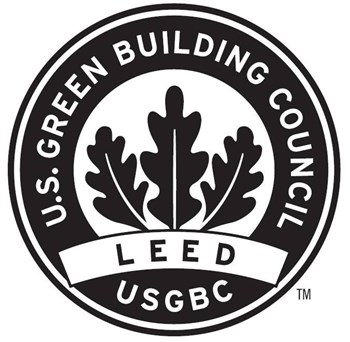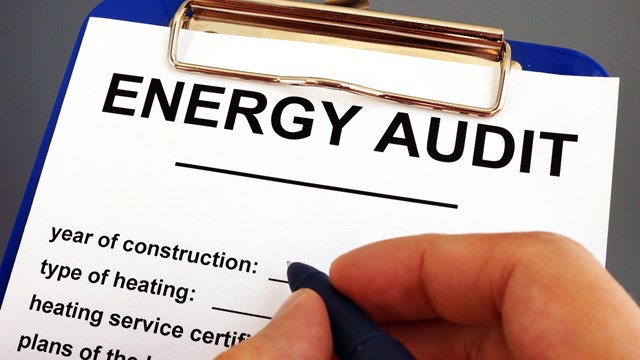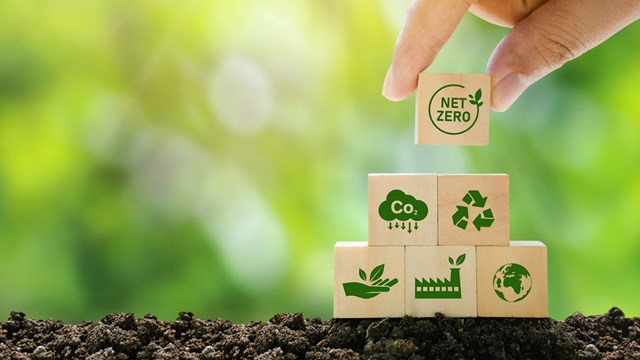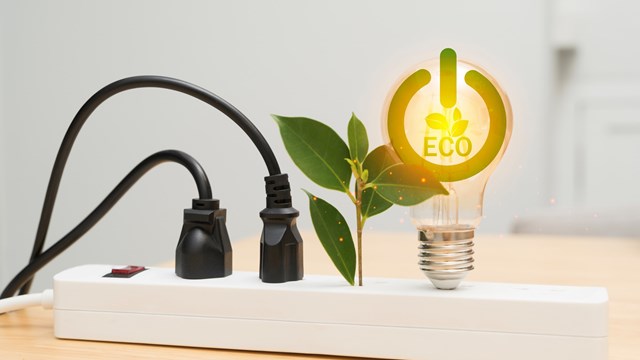
There are two ways—and only two ways—to balance a budget: increase revenue or decrease spending. Whether you’re the treasurer of a co-op board or the President of the United States, those are the only two levers at your disposal.
Energy is no different. With the global population soaring, with oil reserves plateauing just as new markets are emerging in China and India—and with the climate changing at an unsustainable rate—the need to both increase sources of energy and conserve the ones we have has never been more vital.
The Gold Standard
Since it was first implemented 20 years ago, the U.S. Green Building Council (USGBC)'s LEED certification has been the gold standard when it comes to measuring a building's environmental conscience. Being LEED-certified at any level means that much thought and planning was put into a building before ground was even broken to begin construction. LEED buildings have an array of advantages over non-certified buildings—some of which are wallet-based, some of which are body- and health-based.
According to the USGBC, the residential market—from multi- to single-family, from market rate to affordable housing, is reaping the benefits of using green building techniques. Since the launch of LEED for Homes in 2008, more than 39,000 homes have received LEED for Homes certification and over 111,000 are registered for certification. Over half of all LEED-certified homes are in the affordable housing category, the USGBC says.
New York ranks 3rd in the nation with 2,924 commercial buildings that are LEED registered and certified, totaling more than 519 million square feet of LEED registered and certified green building space. Individually, New York City ranks 1st for the top U.S. cities with the most LEED project activity, according to a USGBC Green Building Industry Brief. In total, New York has 6,718 LEED registered and certified homes across the state. The USGBC reports that the more than 519 million square feet of certified green building space is equivalent to 187 Empire State Buildings.
LEED-ing the Way
What is LEED? Why is it the golden standard? How can boards go about making their buildings LEED-certified? And would they want to?
In 1993, a troika of prescient industry experts—Rick Fedrizzi, David Gottfried and Mike Italiano—founded the U.S. Green Building Council, to promote sustainability in building and construction. They gathered representatives from a wide swath of architecture firms, and set to work on a system to rate buildings according to how “green” they were. Seven years later, the Leadership in Energy and Environmental Design—LEED—building certification system was unveiled, consisting of a series of criteria to quantify how energy efficient buildings are.
“It’s expanded since its inception,” says David Ahrens, president of the New York chapter of the Association of Energy Engineers. “Right now, it consists of nine different ratings systems.” The nine systems represent nine different categories of buildings. The ones relevant to residential buildings are:
New Construction: Dozens of new buildings in the Big Apple are LEED-certified each year.
Core and Shell: “Not what’s inside,” Ahrens explains, but the exterior of a building and its central systems.
Existing Buildings: Operations & Maintenance (EBOM). A green HVAC system and state-of-the-art windows go a long way.
By the Numbers
Each category is broken down into a series of indices, and each index is rated. The score is then aggregated, and the result is a number from 1-100. Forty to 49 is LEED-certified; 50-59 is silver; 60-79 is gold; and above 80 is platinum, Ahrens explains.
LEED EBOM recognizes superior performance in five core categories: sustainable sites; water efficiency; energy and atmosphere; materials and resources; and indoor environmental quality. It also recognizes innovation in operation and designates certain priorities based on a building’s geographic location. This is important, because most residential buildings seeking LEED certification in New York are existing buildings, and these will strive for LEED EBOM certification.
In 2009, New York became the first city to enact legislation requiring existing buildings to measure and report their energy use. Local Law 84 was part of a package of legislation intended to dramatically reduce the city’s carbon footprint. The laws “will make New York the first American city with a comprehensive, mandatory effort to reduce emissions from existing large buildings,” Mayor Michael R. Bloomberg said at the time. “This package, which is part of our six-point Greener, Greater Buildings Plan introduced on Earth Day, is the most significant action to date to meet our PlaNYC commitment to reduce emissions 30 percent by 2030.”
What the benchmarking law has demonstrated is that even existing buildings can achieve superior energy efficiency. The Empire State Building—Exhibit A in the case for “They Don’t Make ‘em Like They Used To”—scored an 80, and the Chrysler Building secured an astonishing 84.
The 2012 Benchmarking Report explains: “New York City’s buildings perform significantly better than the national average, having a median Energy Star score of 64 out of 100, according to EPA comparisons, although the weather-normalized energy use intensity for New York’s buildings is comparable to the rest of the Northeast. This suggests that city’s high scores could be attributable in part to the age of the city’s building stock, which is similar to the rest of the region. Older buildings tend to have higher Energy Star scores than newer buildings for a variety of reasons to be further explored, including less extensive ventilation systems, better thermal envelopes, and/or less dense or energy intensive tenant occupations.”
What this means, for residents of older buildings, is that energy efficiency is within reach. You don’t have to be a flashy new building to achieve a high rating.
Not long ago, this sort of environmental movement was the provenance of dreamers and hippies. Now it is something that unites people from across the political divide.
You Too Can Be Green
“The idea that you could be green in a cost-effective way is very compelling,” says Ellen Honigstock, who is the director of construction education at USGBC’s Urban Green Council and an architect. Once the organization showed the way to achieve energy efficiency, the idea took off.
“LEED didn’t exist in a vacuum,” says Russell Unger, executive director of the Urban Green Council, which is the New York arm of the USGBC. “It came after decades of work on climate change. You had a bunch of organizations jump-start this—that overlapped with a change in conventions.” When you consider how to conserve energy, “buildings matter,” Unger says, “because we spend 90 percent of our time there.”
To green your building, Honigstock says, “start to figure out what you already have, how you perform.” The initial steps involve analyzing the usage of energy and establishing benchmarks. “Benchmarking is when you calculate the amount of energy used,” she explains. Then, the professionals get involved. “Architects do an analysis—how to improve windows, lights, heating.” The architects and engineers, she says, will provide estimates on what the upgrades to existing buildings will cost. “There are government initiatives to offset the costs,” she says.
“It’s a fairly expensive process,” she concedes. The up-front price tag is one of the barriers to a wider acceptance. Boards look at the capital investment and get nervous. The idea that a building should spend money now to plan for the future is, in many cases, not the way boards tend to think. Budgets are hard enough to calculate without start-up costs.
The other hurdle is lack of knowledge. In most co-ops and condos, the property managers are the agents of change. They’re the ones who spot trends and advise buildings to try new things. But property managers tend not to be among the many professionals who hold LEED accreditation.
“You know what building managers do. They’re busy. They don’t have time,” Honigstock says. “Boards have to ask managers to do it,” to get the LEED training. “Request an agent to get trained and make the changes,” she advises.
Getting Certified
Another organization, the third-party Green Building Certification Institute, provides said training. “It certifies individuals as LEED-accredited professionals,” says Ahrens. Certification involves learning about the LEED system, about conservation of building resources, about how to make existing buildings more green.
“In the end,” says Unger,” a lot of resistance is hard-wired thinking.” A paradigm shift is required. And it will be worth it. Both Unger and Honigstock agree that getting LEED certification for a building is the single best thing anyone on a board can do for the environment. When asked point-blank if there were any benefits to not moving to a LEED-certified system, Honigstock says, pointedly, “None.”
The push for green buildings has happened at a stunning rate of speed. LEED was still in the larval stages 20 years ago. The ratings systems have only been around for 13 years. The Green Building Certification Institute has only been awarding certifications for five years—a blink of the eye. And the city’s Greener, Greater Buildings Plan has only just begun, although Mayor Bloomberg has been an early adopter of energy efficiency nationwide. That so many buildings have gone green in so short a time is a great boon for the environment.
Greg Olear is a freelance writer and a frequent contributor to The Cooperator.






Comments
Leave a Comment